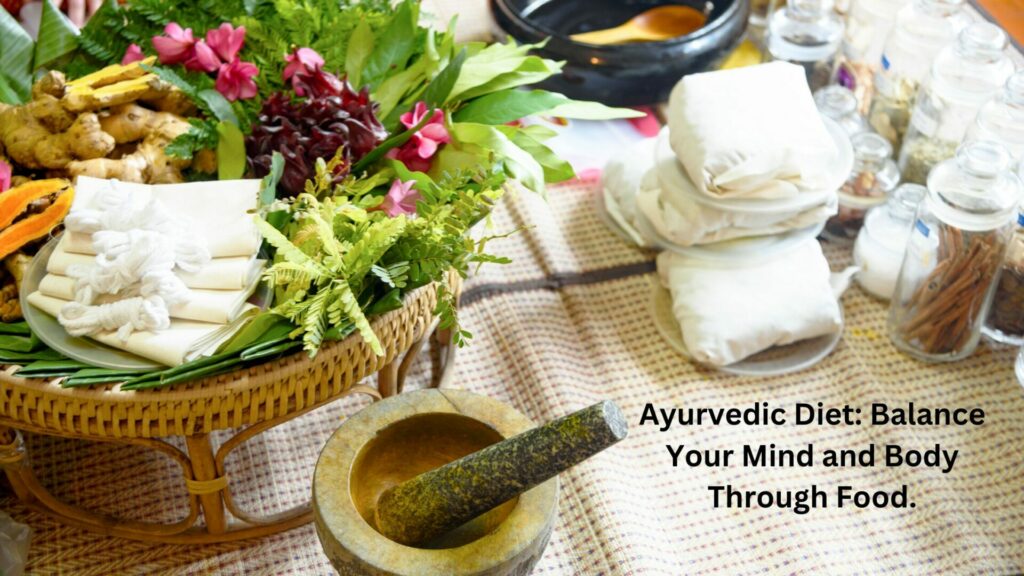
The Ayurvedic diet is a centuries-old approach to eating rooted in Ayurveda, the ancient Indian system of medicine. It emphasizes eating foods that promote balance in the body and mind, considering individual constitution, or doshas. This holistic diet doesn’t just nourish the body but aligns the energies within to optimize health and well-being.
In this guide, we’ll explore the basics of the Ayurvedic diet, how to eat according to your body type, the benefits it offers, and practical ways to incorporate its principles into modern life.
What is the Ayurvedic Diet?
The Ayurvedic diet is based on the idea that health depends on a delicate balance between the mind, body, and spirit. Ayurveda divides people into three primary doshas or energies: Vata, Pitta, and Kapha. Each person is thought to have a unique balance of these three doshas, which dictate their individual dietary needs.
The primary focus of the Ayurvedic diet is to balance these energies by eating fresh, whole foods that align with your dosha. The diet discourages processed and junk foods, instead emphasizing mindful eating, herbs, and natural ingredients.
Key Takeaway: The Ayurvedic diet offers a holistic approach to eating that emphasizes balance, mindfulness, and natural foods.
How the Ayurvedic Diet Works
Understanding Your Dosha
The first step in adopting an Ayurvedic diet is determining your dominant dosha. Ayurveda identifies five elements—air, water, fire, earth, and ether—each corresponding to different characteristics in the body. These elements combine to form three doshas:
- Vata (Air and Ether): Governs movement and the nervous system. Vata types tend to be energetic, creative, and prone to anxiety.
- Pitta (Fire and Water): Governs digestion and metabolism. Pitta types are often competitive, focused, and may struggle with anger or digestion issues.
- Kapha (Water and Earth): Governs body structure and fluid balance. Kapha types are nurturing, calm, and can struggle with weight gain or sluggishness.
The Role of Tastes in the Ayurvedic Diet
In Ayurveda, the six tastes—sweet, sour, salty, bitter, pungent, and astringent—play a vital role in balancing the doshas. According to this system, incorporating all six tastes into your daily diet is crucial for achieving harmony and preventing disease.
- Sweet: Balances Vata and Pitta, aggravates Kapha.
- Sour: Balances Vata, aggravates Pitta and Kapha.
- Salty: Balances Vata, aggravates Pitta and Kapha.
- Bitter: Balances Pitta and Kapha, aggravates Vata.
- Pungent: Balances Kapha, aggravates Pitta and Vata.
- Astringent: Balances Pitta and Kapha, aggravates Vata.
Key Principles of the Ayurvedic Diet
Eat According to Your Dosha
The Ayurvedic diet offers tailored eating guidelines based on your dominant dosha:
- Vata: Favor warm, moist, and nourishing foods like stews, soups, and whole grains. Avoid cold, dry, and raw foods like salads and crackers.
- Pitta: Cool and refreshing foods are ideal for Pitta types, such as fresh fruits, raw vegetables, and dairy. Avoid spicy, hot, and fried foods.
- Kapha: Light, dry, and warm foods balance Kapha. Choose fruits, vegetables, and spices while avoiding heavy, oily, and overly sweet foods.
Key Tip: Understanding your dosha and eating accordingly is essential to reaping the full benefits of the Ayurvedic diet.
Mindful Eating
The Ayurvedic diet promotes mindfulness not just in the selection of food but also in the act of eating. This involves:
- Eating slowly and without distractions, such as smartphones or television.
- Chewing thoroughly to enhance digestion.
- Eating at regular intervals to maintain a balanced metabolism.
Related Reading: Your Coffee Habit May Reduce Your Risk of Heart Disease, Diabetes—Here’s How Many Cups to See Benefits.
Foods to Eat and Avoid Based on Dosha
Each dosha benefits from specific foods and should avoid others to stay in balance:
Vata
- Foods to Eat: Cooked grains (rice, oats), root vegetables, warm milk, and soups.
- Foods to Avoid: Raw vegetables, cold salads, dry fruits, and caffeine.
Pitta
- Foods to Eat: Cool, sweet foods like cucumbers, melons, and leafy greens.
- Foods to Avoid: Spicy foods, alcohol, caffeine, and oily dishes.
Kapha
- Foods to Eat: Spicy, bitter, and astringent foods like lentils, garlic, and leafy greens.
- Foods to Avoid: Dairy, sweets, fried foods, and excess salt.
Benefits of the Ayurvedic Diet
The Ayurvedic diet offers numerous health benefits, many of which are rooted in its emphasis on whole foods and balance.
Weight Management
By reducing the intake of processed foods and focusing on high-quality, nutrient-dense ingredients, the Ayurvedic diet can help with weight management. The mindful approach to eating can also prevent overeating.
Improved Digestion
Ayurveda places a strong emphasis on digestive health, promoting foods and herbs that improve digestion, prevent bloating, and enhance nutrient absorption. The inclusion of spices like ginger and turmeric supports gut health and balances the digestive fire, or Agni.
Enhanced Mental Clarity and Focus
Ayurvedic principles stress the importance of mind-body harmony. By eating foods that balance your dosha, you can improve mental clarity, reduce stress, and support overall emotional well-being.
Read Next: Ten Mistakes People Make When Trying to Stay Productive
Increased Longevity
The Ayurvedic diet promotes overall wellness, including proper sleep, physical activity, and a balanced mind. These factors, combined with the diet’s emphasis on whole foods, can improve your quality of life and potentially increase longevity.
Practical Tips for Following the Ayurvedic Diet
Here are some simple ways to integrate the Ayurvedic diet into your life:
- Start your day with warm water: This helps kick-start your digestion.
- Incorporate more spices: Spices like turmeric, cumin, and fennel are essential in Ayurveda for their healing properties.
- Chew your food thoroughly: Mindful chewing is a core principle in the Ayurvedic diet for aiding digestion.
- Create a peaceful environment for meals: Avoid distractions to fully enjoy and digest your food.
Conclusion: Why the Ayurvedic Diet May Be Right for You
The Ayurvedic diet is more than just a way of eating—it’s a lifestyle. By balancing your dosha, practicing mindful eating, and focusing on whole, natural foods, you can achieve lasting health and well-being. Whether you’re looking to improve digestion, lose weight, or enhance mental clarity, the Ayurvedic diet offers a sustainable and holistic approach to health.



